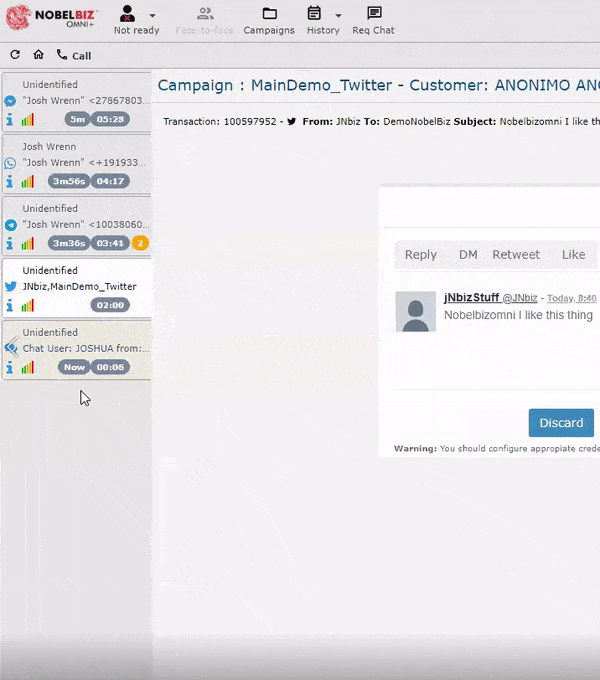A new report determined that American consumers overwhelmingly approve of interacting with brands over social media. Voice is becoming just a fraction of the responsibilities of a contact center. More and more customers now prefer to resolve basic customer support requests over social channels.
And it makes sense, doesn’t it? Back in December we saw just how much phone call spam American consumers receive and then we saw just how bad that got during the pandemic. It’s fair to assume the industry is shifting because of declining trust in voice.
Customer service is changing to be more present in the spaces often frequented by the customers. Let’s see more!
Brand Confidence on the Rise
The report by Invespcro, cited on Business to Community, is the result of months of research, much of it during the prime of COVID-19. One key finding was that 69% of U.S. citizens said that by directly messaging with a brand (whether it be on Twitter, Facebook, or any other platform), their overall trust in that brand increased.
That’s customer support done right. This might alleviate some of the pressure that often gets put on agents. If you’re a brand and you’re getting more returns in brand confidence if you switch the stressed-out agents from the phone to a few chat windows, everyone stands to win, right?
And if any of our recent findings in our podcast episode with Tom Laird are any indicator, Millennial and Gen Z agents tend to perform far better on text channels than on voice because they’re already used to holding up to 5-7 conversations at the same time.
Most Small & Medium Businesses Are Already Doing Twitter Support
Next on the list of findings, 85% of small and medium businesses already use Twitter for support. That’s an impressive amount.
It’s based on the nature of the platform. Because it’s primarily text-based, it’s relatively effortless for a brand to see its mentions and reply in real-time. Furthermore, most software like our OMNI+ offers the option to automatically detect those Tweets and add them to agents’ queues.

Furthermore, we learned back in May that complex IVRs and contact center solutions that can do such things are primary drivers for growth in the entire contact center market.
Enabling Brand Loyalty through Social Media
Brand confidence may be on the rise, but the data is even more revealing. According to the report, brand advocacy can rise by up to 25% after positive interactions during a complaint on social media.
Not only that, but 51% of people say they’d likely become a repeat customer after a company replies to a question on social media. 41% said they’d be “somewhat likely” to become a repeat customer. That leaves just 8% who wouldn’t. Those are some good odds!
Also a Question about Cutting Costs
If executives need any further proof that this change is happening across the board, we can look at the costs. The report says the cost of contacting a customer can drop by a staggering 83%. At the same time, the revenue that the customer generates is likely to go up by anywhere from 20% to 40%.
Some More Numbers
Everyone else is doing it too. The percentage of customers who receive a response after a social channel query is 84%.
Recommendations are likely to rise as well. We know that “likely to recommend” is one of the survey questions people are most likely to lie on. Still, however inaccurate this particular metric is, 71% of those who have a positive experience on social media say they’re likely to recommend that brand to friends or family.
Social Media Customer Support Is Here to Stay
The last metrics in the report confirm what we already knew: American consumers still prefer voice interactions for more complex issues. The current report says that just 33% of consumers would rather reach out to a brand on social media than by phone.
Still, with 59% of people believing customer support is now easier because of social media, it’s clear that businesses need to adapt to an omnichannel software solution and work together to offer better support.
Original Infographic:


Andrei is an experienced marketing professional specializing in propelling growth for both B2B and B2C companies. Proficient in streamlining marketing operations and enhancing lead and customer experiences through SEO and marketing techniques.






